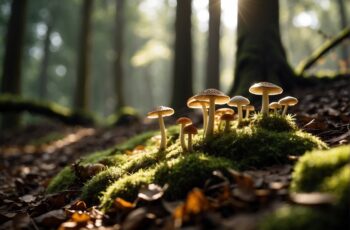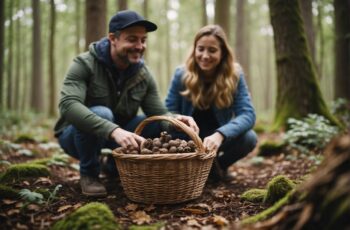Oregon’s lush landscapes and dense forests offer a unique bounty of wild edible mushrooms, a treasure trove for those who know where to look. As you explore the verdant wilderness of this Pacific Northwest state, you’ll find that edible mushrooms are abundant and varied. Bear in mind the importance of proper identification, as some mushrooms can be harmful if misidentified. With the right knowledge, foraging for mushrooms can be a rewarding and delicious pastime.
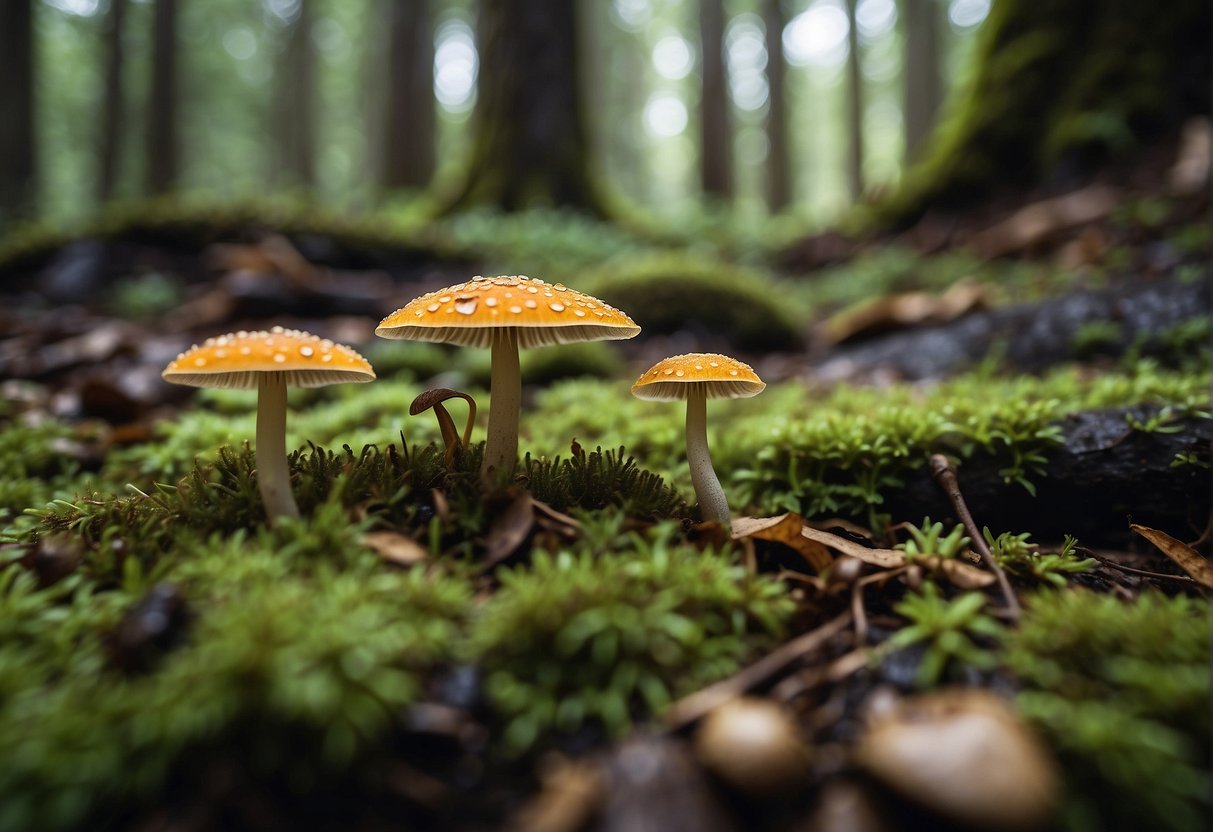
While Oregon’s woods and coastal regions beckon, it’s essential to know which mushrooms are safe to eat. From the savory Pacific Golden Chanterelle to the delicate Oyster mushrooms, these natural delicacies can enrich your culinary experiences. To ensure a positive foraging adventure, it is crucial to learn about the habitats where these mushrooms thrive and to harvest sustainably, preserving the delicate balance of Oregon’s woodland ecosystems. Whether you’re a seasoned forager or a curious newcomer, understanding the ecology of these fungi is as important as savoring their flavors.
Key Takeaways
- Edible mushrooms in Oregon provide foraging opportunities with a variety of species to discover.
- Proper identification and sustainable harvesting methods are essential for safe mushroom foraging.
- Understanding mushroom habitats contributes to conservation efforts and ecological awareness.
Types of Edible Mushrooms in Oregon
Oregon’s forests are a prime location for mushroom foraging, offering a variety of edible fungi that are both delicious and nutritionally valuable. Whether you’re looking to cook a gourmet meal or simply enjoy the experience of foraging, understanding the different types of edible mushrooms you can encounter is crucial.
King Bolete and Other Boletes
King Boletes, scientifically known as Boletus edulis, are prized by mushroom hunters for their meaty texture and rich flavor. These mushrooms are notable for their large size, sometimes weighing up to two pounds. Boletes in general have a distinctive sponge-like layer under their cap instead of gills, and there is an abundant variety to be found within Oregon’s woodlands. More about King Boletes and their forest companions can be found here.
The Popular Chanterelles
The Pacific Golden Chanterelle stands out as Oregon’s state mushroom, and for a good reason. This wild mushroom is sought after for its peppery, fruity profile. When foraging for chanterelles, remember they have false look-alikes, so identification is key. Chanterelles have wavy edges and a vibrant golden hue, making them a favorite among the forests of Oregon.
Morels and Their Unique Flavor
Morels are easily recognized by their spongy, honeycomb-like appearance. They’re known for their nutty and earthy taste, often used in fine dining. However, they’re also a joy to find on your foraging expeditions here in Oregon. Morels require specific conditions to thrive, often popping up after a rain or in areas with disturbed ground from fires or logging.
Hedgehog and Oyster Mushrooms
The Hedgehog mushroom, identified by its spiky, tooth-like gills on the underside, is another Oregon delicacy. It’s similar in taste to the chanterelle but with a slightly sweeter note. Oyster mushrooms are also common in the region, with their delicate flavor and fan-shaped caps. These mushrooms can often be found on the sides of trees and are a great find for any forager due to their versatility in cooking.
Foraging Tips and Techniques
Before venturing into the woods, familiarize yourself with the essential techniques and ethical guidelines of mushroom foraging in Oregon. Knowing when to go, what to look for, and how to forage responsibly will ensure a fruitful and respectful harvest.
Best Seasons for Foraging
Spring and fall are peak seasons for foraging mushrooms in Oregon. During the spring, you have the chance to find a variety of flavorful mushrooms as nature awakens. The fall season is equally bountiful, offering a different selection as the temperatures drop and moisture levels rise.
- Spring Season: Look for morels and oyster mushrooms.
- Fall Season: Search for chanterelles and porcinis.
Identifying Edible Mushrooms
Mushroom identification is critical to a safe foraging experience; mistaken identity can lead to consuming species that are deadly or make you sick. Always use a field guide to cross-reference and ensure accurate identification. Take note of the accompanying soil, texture, and flavor descriptors in your guide.
- Visual Inspection: Check the color, size, and shape.
- Spore Prints: Compare spore colors with your guide.
- Touch and Smell: Familiarize yourself with the physical characteristics and scent.
Mushroom Foraging Ethics
Foraging with caution and respect for the environment is paramount. Adhere to the principles of Leave No Trace to minimize impact on forest ecosystems.
- Only harvest mushrooms you plan to use to avoid waste.
- Use a mesh bag to allow spores to disperse and promote regrowth.
- Be considerate of wildlife and other foragers by not overharvesting.
Habitats and Ecology of Mushrooms
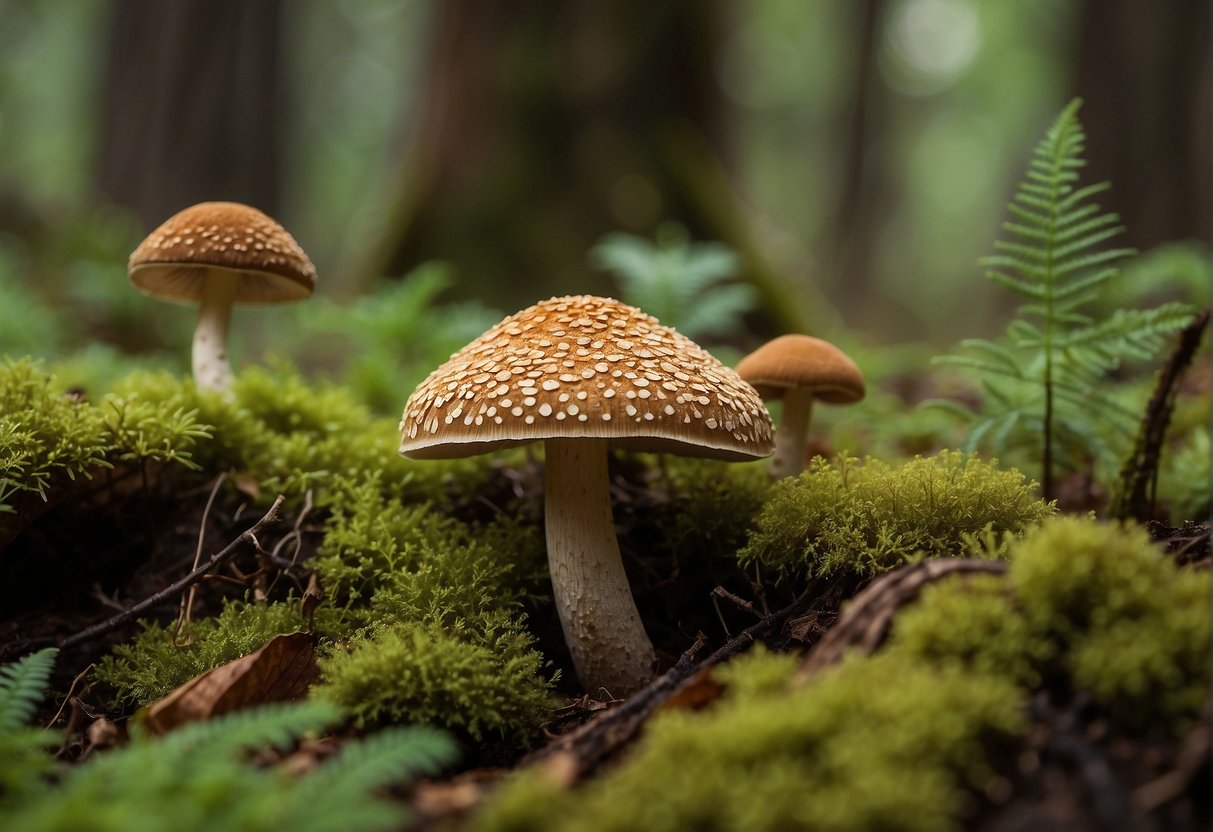
In Oregon’s vast forests, mushrooms thrive in a complex dance with trees and soil. You’ll find a rich diversity of fungi that form the backbone of these wooded ecosystems.
Forest Ecosystems and Mycorrhizal Relationships
Oregon’s forests, especially the Pacific Northwest, are a tapestry weaved with a variety of trees like pine, oak, birch, aspen, and beech. These trees form symbiotic, mycorrhizal relationships with mushrooms, which are crucial for nutrient exchange. In both deciduous and coniferous forests, mushrooms can be seen emerging from the forest floor and around decaying trees. The rainbow chanterelle, for instance, is a prized find, symbiotically intertwined with conifers and bringing color to your foray through the woods.
Importance of Soil and Weather Conditions
The soil in North America’s Pacific Northwest provides a veritable bed for mushrooms, thanks to its rich organic matter and moisture. Soil quality, coupled with the right water levels from frequent rain, creates an ideal breeding ground for mushrooms. Pay attention to these conditions when seeking out edible varieties; a balance of moisture and nutrients is what gives rise to the fungi kingdom under your feet. In particular, after a good rain, you’re likely to spot the telltale signs of fungal fruiting bodies pushing through the soil.
Conservation and Sustainability
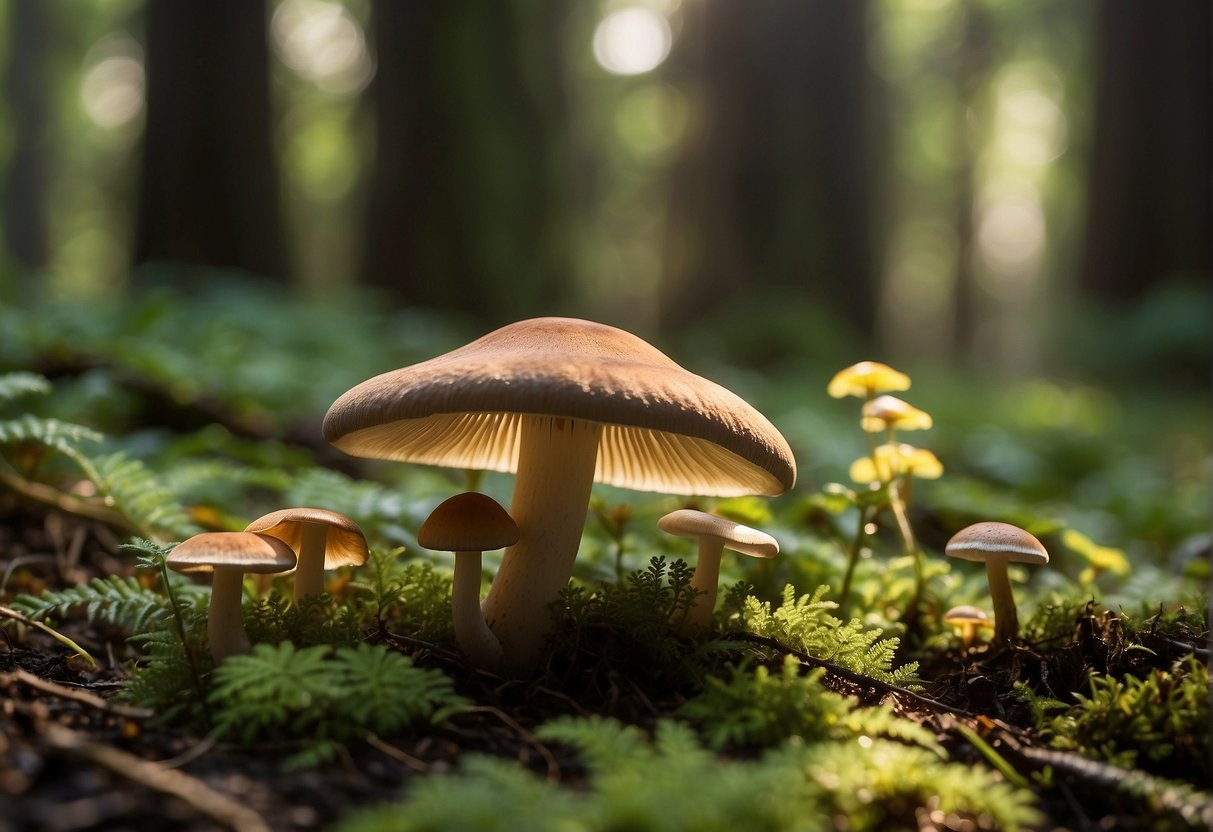
When foraging for wild mushrooms in Oregon, it’s crucial to think sustainability. The forest floors of Oregon’s ecosystems are not only picturesque but also home to a plethora of mushroom species that contribute to the local ecology and wildlife. Proper foraging techniques are pivotal in ensuring these fungi can continue to thrive for years to come.
Here’s what you can do to help:
- Identify your mushrooms: Make sure you’re picking the right ones. Some mushrooms are vital to the forest’s health and aren’t meant to be disturbed.
- Take only what you need: It’s tempting to harvest in large amounts, but remember, sustainability is key. Over-harvesting can lead to a decline in mushroom populations.
- Vary your foraging spots: Spreading out your foraging efforts helps prevent putting too much pressure on a single area, which can disrupt the delicate balance of the forest’s ecology.
- Use a mesh bag: This allows spores to disperse as you walk, helping to propagate future generations of mushrooms.
Your actions have a direct impact on the conservation of these natural areas. By respecting local guidelines and adopting sustainable foraging habits, you’re protecting the natural heritage of Oregon for both current fellow outdoorsmen and future generations. Remember, preserving Oregon’s rich biodiversity is a collective responsibility. Happy and responsible mushroom hunting!

